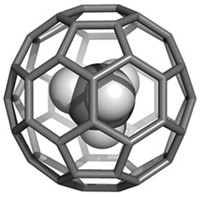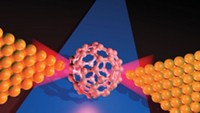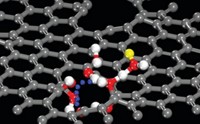Advertisement
Grab your lab coat. Let's get started
Welcome!
Welcome!
Create an account below to get 6 C&EN articles per month, receive newsletters and more - all free.
It seems this is your first time logging in online. Please enter the following information to continue.
As an ACS member you automatically get access to this site. All we need is few more details to create your reading experience.
Not you? Sign in with a different account.
Not you? Sign in with a different account.
ERROR 1
ERROR 1
ERROR 2
ERROR 2
ERROR 2
ERROR 2
ERROR 2
Password and Confirm password must match.
If you have an ACS member number, please enter it here so we can link this account to your membership. (optional)
ERROR 2
ACS values your privacy. By submitting your information, you are gaining access to C&EN and subscribing to our weekly newsletter. We use the information you provide to make your reading experience better, and we will never sell your data to third party members.
Synthesis
Molecular Close-Up
Images show motions of single, confined molecule
by Ron Dagani
February 26, 2007
| A version of this story appeared in
Volume 85, Issue 9
By confining a single, small organic molecule inside a narrow, single-walled carbon nanotube, scientists in Japan have been able to use transmission electron microscopy (TEM) to follow the molecule's motions with near-atomic resolution (Science, DOI: 10.1126/science.1138690).
"What we did is like trapping a flying bee in a glass tube to see how the wings move," remarks Eiichi Nakamura, the chemistry professor at the University of Tokyo who led the discovery team supported by the Japan Science & Technology Agency. In a vacuum, small molecules tend to move too fast, he explains, but trapping them in a nanotube slows them down enough to allow close observation.
Nakamura and coworkers studied several guest molecules, including ortho-carboranes bearing two adjacent alkyl chains up to 22 carbon atoms long. They vaporized the molecules and allowed them to diffuse into the nanotubes in vacuum. By irradiating the nanotubes with electrons at roughly 2-second intervals, the researchers were able to capture the molecules' motions in stop-action videos. These videos reveal the molecule moving along the length of the nanotube as well as undergoing conformational changes. The images show that an alkyl tail sometimes momentarily sticks to the nanotube wall. "You can also study the entanglement of the tails" to get a measure of the competition between tail-tail and tail-wall attractions, comments chemist Roald Hoffmann of Cornell University.
"This is the most direct visualization of the motion of a molecule inside a nanotube" that he's seen, Hoffmann tells C&EN, and it's "damn clever."
Two reviewers of the paper were similarly impressed, calling the work "an exciting achievement" and "a very ambitious study" offering "amazing" data.
TEM has been used previously to image molecules such as proteins and fullerenes. Scientists have attempted to image small organic molecules in thin films, but these tend to decompose under electron impact, partly due to heat formation, Nakamura points out. "What we discovered is that a single molecule in a nanotube in vacuum survives TEM conditions for some time."





Join the conversation
Contact the reporter
Submit a Letter to the Editor for publication
Engage with us on Twitter